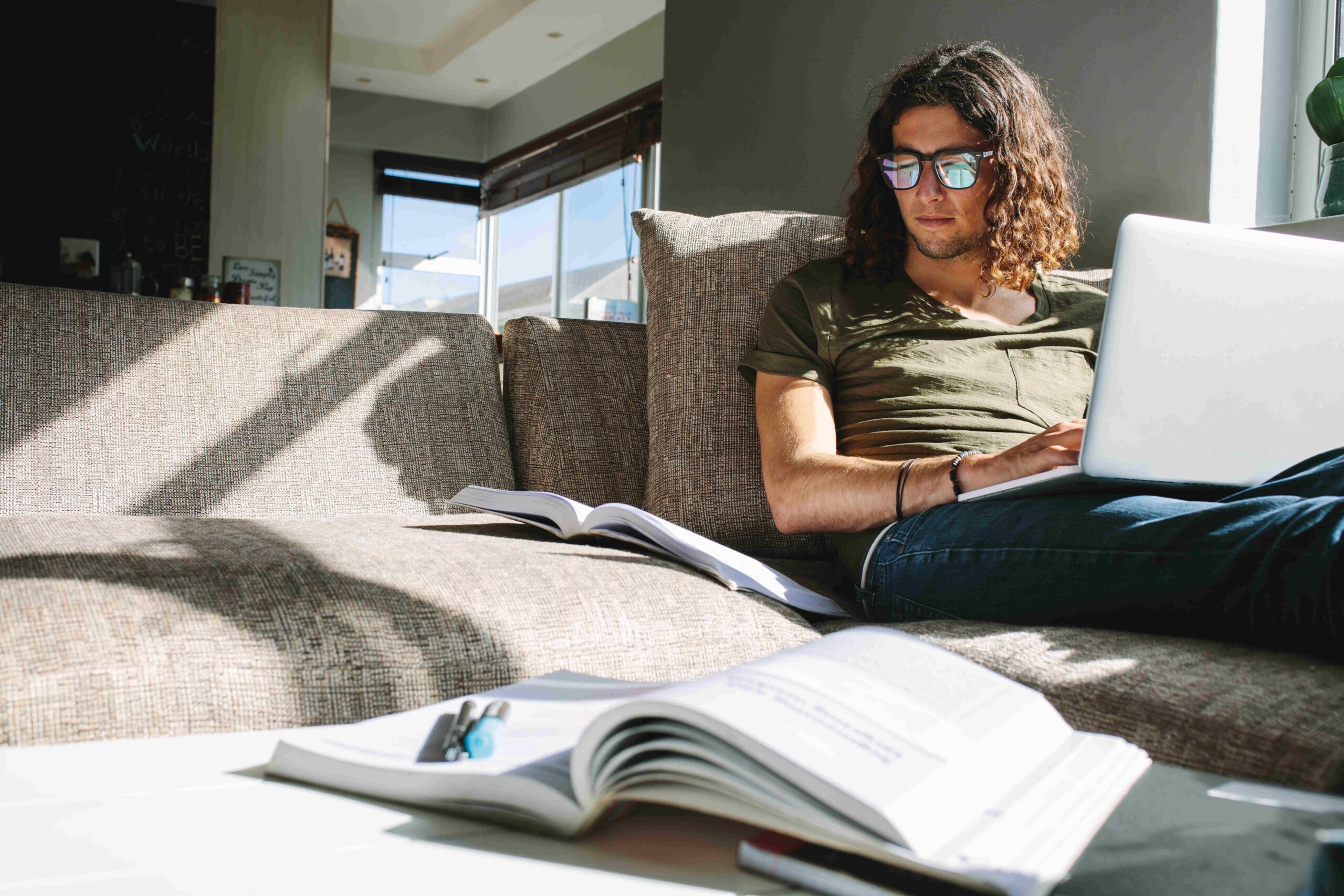
Studying at home sounds easy—until the laundry, dishes, and Netflix start calling your name. Whether you’re taking online classes or just need a spot to focus between shifts or after the kids are asleep, a dedicated study space can make a huge difference in how productive you are.
And good news: you don’t need a spare room or a big budget to make it happen. Even in small or shared spaces, you can create a study zone that helps you stay organized, focused, and on track.
Why a Dedicated Study Space Matters
Your brain loves habits. When you use the same space consistently for studying, it learns to shift into focus mode faster. A dedicated area:
-
Reduces distractions
-
Encourages better time management
-
Improves motivation
-
Makes it easier to stick to a routine
Plus, it’s way easier to find your notes or laptop charger when everything lives in the same place.
Start With What You Have
You don’t need a fancy home office or designer desk. Your study space can be a corner of the kitchen, a folding table in the bedroom, or even a cleared-off coffee table.
Look around your living space and ask:
-
Where can I sit comfortably for 30–60 minutes at a time?
-
Can I avoid high-traffic areas or noisy distractions?
-
Is there a surface that can hold a laptop, notebook, and water bottle?
Sometimes all it takes is rearranging furniture or using a room divider to carve out your own little zone.
Essentials for a Functional Study Area
No matter how big or small your space is, here are a few basics that make studying easier:
A Sturdy Surface
Whether it’s a desk, dining table, or repurposed nightstand, you need a clean, flat surface. Avoid studying on the bed if possible—it’s not great for posture or focus.
Comfortable Seating
You don’t need an ergonomic chair from a catalog, but aim for something supportive. Use cushions or a lumbar pillow if your only option is a dining chair.
Good Lighting
A well-lit space helps prevent eye strain and fatigue. Natural light is great during the day. At night, add a desk lamp or clip-on light that shines directly on your workspace.
Tech Setups
Keep your charger nearby, and use a laptop stand or stacked books to raise your screen to eye level. Consider noise-canceling headphones or white noise apps if you’re in a shared space.
Supplies Within Reach
Keep the tools you use most—pens, notebooks, calculator, headphones—nearby. A small basket or caddy can help keep everything organized and portable if you move around.
Budget-Friendly Study Space Hacks
Working with a tight budget? No problem. These low-cost ideas can help upgrade your space without draining your wallet.
| Study Need | Budget Hack |
|---|---|
| Desk or Table | Use a folding table or repurpose an ironing board |
| Chair Support | Add a pillow or rolled towel for lumbar support |
| Lighting | Pick up an inexpensive clip-on light or LED lamp |
| Noise Control | Try earplugs or white noise from free apps or YouTube |
| Storage | Use cardboard boxes, dollar-store bins, or repurposed jars |
| Organization | Hang a towel bar with hooks for headphones, cords, and notes |
Get creative—your study space just needs to work for you, not win a Pinterest award.
Tips for Shared Living Spaces
If you live with roommates, kids, or a partner, it’s not always easy to claim uninterrupted space. Here’s how to make it work:
-
Use headphones as a visual cue that you’re “in the zone”
-
Set regular study times so others know when not to interrupt
-
Hang a “Do Not Disturb” sign or use a room divider for privacy
-
Store your study supplies in a tote bag or rolling cart for easy access
-
Be flexible—early mornings or late evenings might be your quietest window
If you can, rotate with others in the household so everyone has time for quiet tasks or studying.
Make It Comfortable—but Not Too Comfortable
You want to feel good in your space, but not so relaxed that you lose focus. A few ways to strike the right balance:
-
Keep snacks and water nearby, but avoid working in the kitchen if it’s high-traffic
-
Play instrumental music or ambient sounds to stay relaxed but alert
-
Avoid working in pajamas or from bed—it tricks your brain into thinking it’s rest time
A little intentional discomfort (like sitting upright or working at a table instead of a couch) can help your brain stay in “get it done” mode.
Personalize Your Space for Motivation
This is your space—make it feel like it. Add touches that motivate you, like:
-
A vision board or goal list
-
Inspirational quotes or affirmations
-
Photos of your kids, graduation cap mockups, or career inspiration
Just avoid too much clutter, which can lead to overwhelm and procrastination.
Keep It Clean and Reset Often
At the end of each study session, do a quick reset. Toss out trash, file papers, and prep for your next round of studying. This keeps your brain and your space clear, so you can dive back in faster next time.
If your space has to be temporary (like a corner of the kitchen), pack everything into a designated backpack or box so you’re ready to go next time.
Final Thought: Your Space, Your Success
You don’t need a dream office to succeed in school. All you need is a consistent, distraction-free space that helps you focus and keeps your materials organized. A few smart tweaks—even on a budget—can turn any corner into a place where progress happens.
Create a space that supports your goals, your schedule, and your life. You’ve already got the ambition—now just give it a place to work.
Sources
-
College Info Geek: How to Create a Study Space at Home
-
U.S. Department of Education: Remote Learning Tips for Adult Students
-
Mayo Clinic: Ergonomics for Home Workspaces
-
National Center for Education Statistics: Adult Learning Environments
